This post is a visitors guide to Coit Tower in city of San Francisco with tips on when to come, how to get here, how much you will pay, and what you will see.
Coit Tower is one of San Francisco’s most recognizable landmarks and a place everyone should add to their list, if only for the wild parrots!
COIT TOWER HOURS AND TICKET COSTS
Open 10 am - 6 pm (May through October), 10 am - 5 pm (November through April)
Admission to the ground floor of the tower is free for everyone. This is where most of the murals are located.
Admission to the second floor requires a ticket for their guided tours.
Also, entrance to the Coit Tower ground floor murals, gift shop and vista points do not require a ticket and can be visited freely.
These tickets are fairly inexpensive and provide an opportunity to see artwork that had been all but forgotten for over half a century.
Elevator Admission:
- $6/adult resident | $8/adult non-resident
- $4/senior resident | $5/senior non-resident
- $2/child (5-11) resident | $2/child non-residents
- child (4 and under) - Free
- Preorder tickets here or pay onsite.
Guided Tour Admission:
- $8 for a full tour of the murals
- $5 for a tour of the second-floor murals
- Duration: 30-40 minutes
- Tours are limited to an 8-person maximum
HOW TO GET TO COIT TOWER
Option 1 - Take the Stairs
If you take a look at a map of the area, it looks like Coit Tower is within easy walking distance of many different neighborhoods: North Beach, Chinatown, the Waterfront, etc.
But be warned! Google Maps doesn't mention the fact that you have to walk up a very steep hill to get there.
But, if you're feeling good and you'd like some exercise, we think this is the best way to get up to the top of the tower.
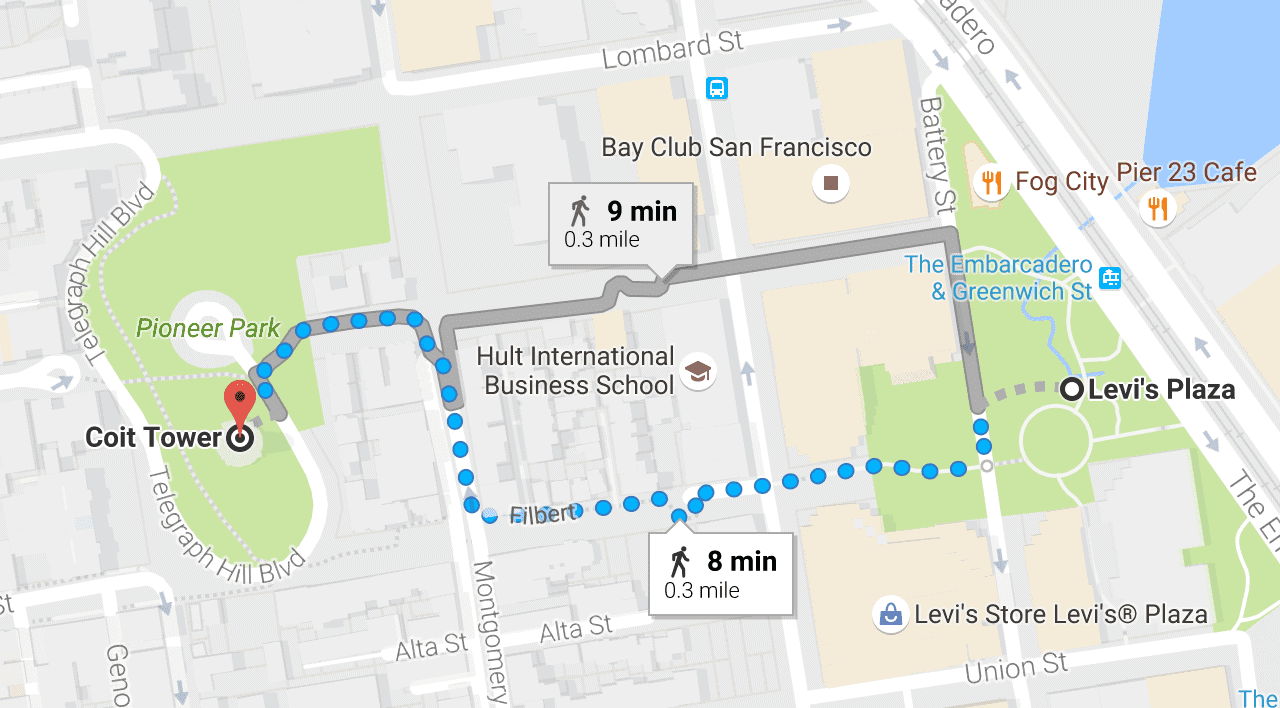
Starting in North Beach at Washington Square Park, you can walk up the hill on Filbert Street.
Or, starting on the other side near the waterfront, you can walk up the Filbert Street Steps.
On the eastern (bay) side of Telegraph Hill, you’ll ascend around 400 steps over a rocky, craggy hillside that formerly was a quarry.
This is a wonderful walk to take if you have the energy for it, because residents of the area have planted beautiful gardens, and they have built incredible homes and cottages adjacent to the steps.
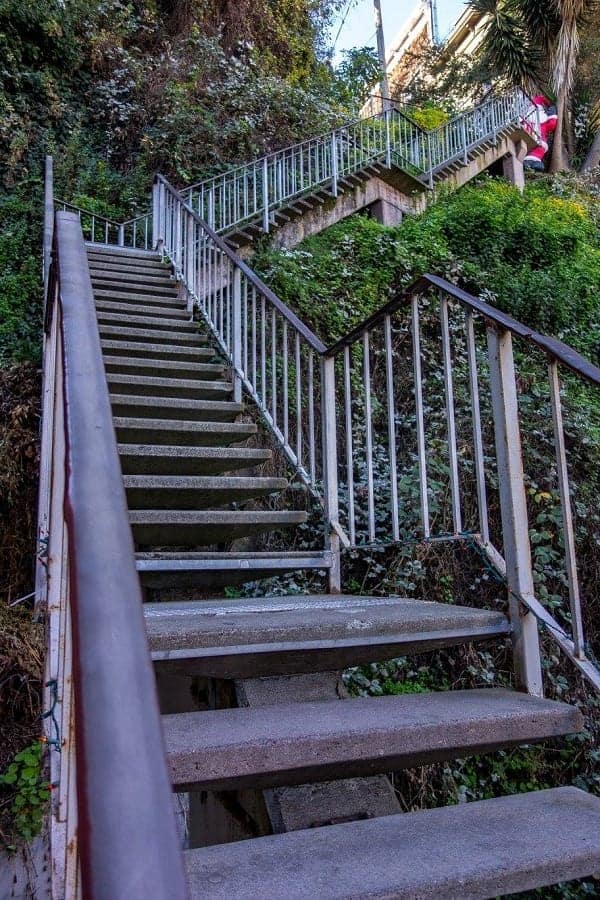
To get to these steps, you can easily reach the Filbert Street Steps from the Embarcadero. Cross through Levi Plaza and continue until you reach Sansome.
When you’ve reached Sansome and Filbert, you’ll see concrete steps at the dead end. Walk to the steps and start climbing!
How many steps are on the stairs to Coit Tower?
Coit Tower in San Francisco has a staircase with approximately 400 steps.
Option 2 - Drive, Taxi, Uber, etc.
If you choose not to hike up the Filbert Street Steps, there are some easier ways to get up the hill.
The drive up to the base of Coit Tower is a quick ride - maybe 10 minutes from downtown.
The easiest way to get up the tower is to start on the western side, in the North Beach area. Your best bet is to start in North Beach.
There is a small parking lot at the top of Telegraph Hill, but it is important to know that the lot fills up very quickly on busy days, so you may be waiting around a while for a spot!
Option 3 - Take a Bus to Coit Tower
The best bus to take is #39, coming from Fisherman's Wharf. You can check out the detailed bus route and schedule here.
Note that the bus costs $2.25 per person, and the bus does not make change. But it will take you directly to the base of Coit Tower.
Option 4 - Walking to Coit Tower
Perhaps you’re not interested in walking the stairs to Coit Tower but you still want to walk.
Or perhaps you could only find parking down in North Beach and want a direct walking route to the top of Telegraph Hill.
The "easiest" (and we put that in quotes because Telegraph Hill is still very steep, and you'll get a workout any way you walk up!) is to start in North Beach and head up the western side of Filbert Street.
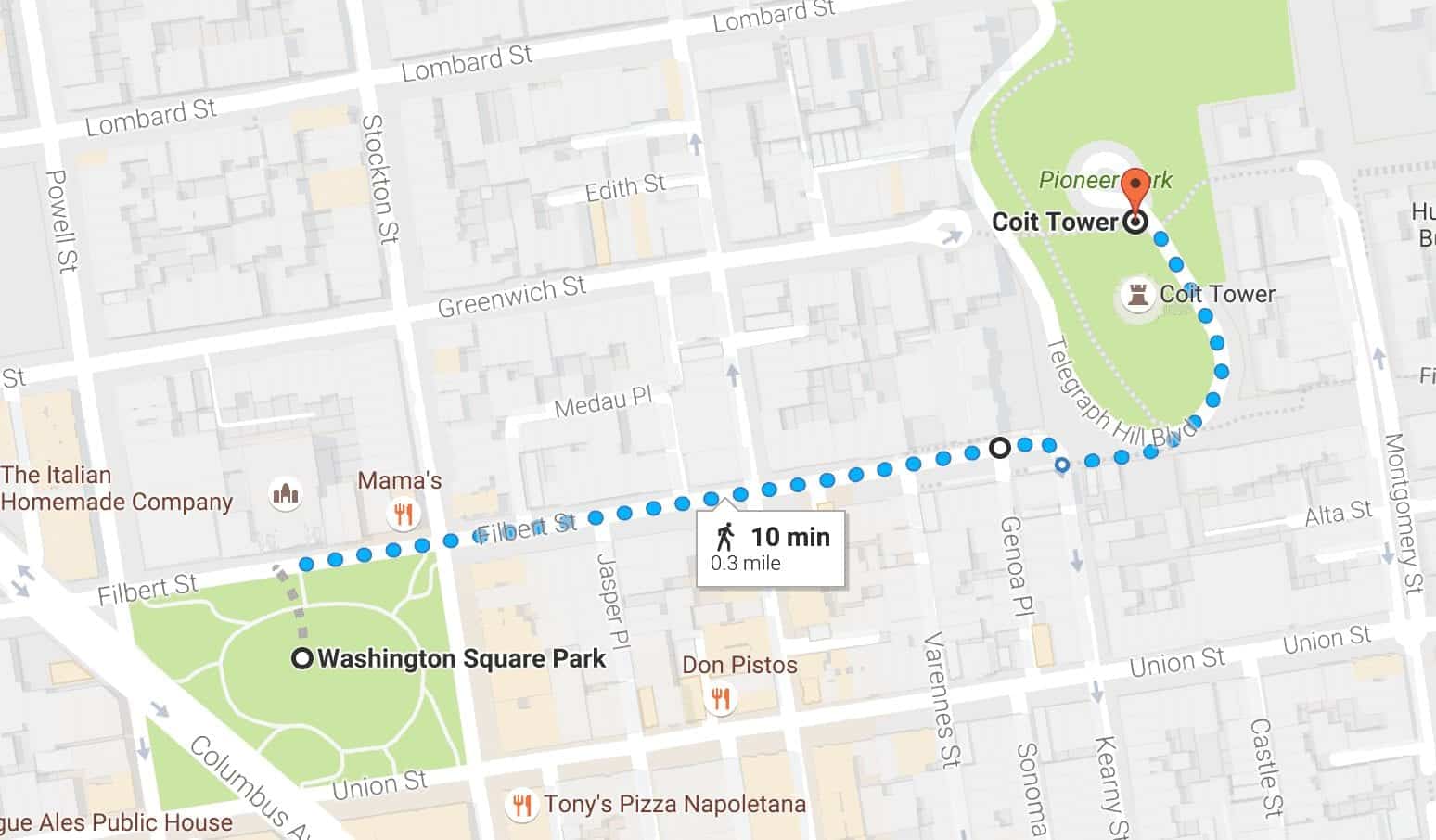
Walking up that street is not as steep as the eastern side, but at the top of Filbert Street, you will run into another staircase.
Walk up the 50 or so steps, and you will arrive at Pioneer Park.
COIT TOWER MURALS
On the interior of Coit Tower, you'll find 27 murals painted during the height of the Great Depression.
Painted by various local artists, these fresco murals reflect the life of San Franciscans during the 1920s and 1930s, including many of the struggles of the working class.
![Epachamo at the English language Wikipedia [GFDL (http://www.gnu.org/copyleft/fdl.html) or CC-BY-SA-3.0 (http://creativecommons.org/licenses/by-sa/3.0/)], via Wikimedia Commons Coit Tower Murals](https://freetoursbyfoot.com/wp-content/uploads/2020/12/Coit_Mural-1000x600-1.jpg)
Epachamo at the English language Wikipedia [GFDL (http://www.gnu.org/copyleft/fdl.html) or CC-BY-SA-3.0 (http://creativecommons.org/licenses/by-sa/3.0/)], via Wikimedia Commons
You'll notice that some of the murals have a distinctive leftist (or even Marxian) theme, with one of the murals even including a depiction of a man holding Marx's book Das Kapital.
Most of the murals are on the ground floor of the tower and are accessible for free whenever the tower is open.
However, there are some murals that few people know about on the second floor of Coit Tower.
This floor has been largely closed off to the public for decades due to its tight viewing space and other factors, but efforts have recently been made to bring more tourists upstairs.
This area is currently limited to small groups in guided tours. For more information on these tours, check our tickets and times section above.
One of the best ways to experience the ground floor murals is to look at all of them in a clockwise direction around the entire gallery.
Some critics suggest that each piece of art tells a story that leads into the next, giving you a better appreciation for how the artists interpreted the world around them.
While a history book can tell you the facts, the only way to get the real story about what it was actually like to live during a certain time period is to see the artwork they've left behind.
These murals do an excellent job of depicting some of the most common concerns that citizens felt during the Great Depression.
Alternatively, SFToDo offers its own breakdown of the artwork, providing information and interpretations of each major piece on display.
Either of these sources would be invaluable for a self-guided tour of Coit Tower.
THE WILD PARROTS OF TELEGRAPH HILL
Be sure to look (and listen) for some of San Francisco’s noisiest residents.
Said to have arrived as part of a South American flock in the 1990s, these parrots (of the cherry-headed conure variety, as well as hybrids) chose to make San Francisco home.
They’ve become such an integral part of Telegraph Hill neighborhood of San Francisco's identity that a documentary film was even made about them! See the trailer below.
VIEWS AND A BRIEF HISTORY
Coit Tower is one of our favorite spots in San Francisco, and the woman it was named after, Lillie Hitchcock Coit, is one of our favorite historic San Francisco characters!
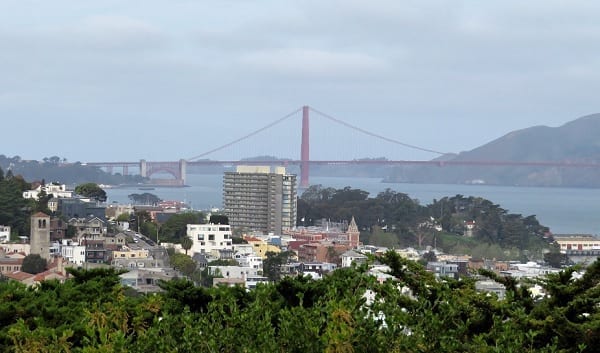
Lillie Hitchcock (no relation to the movie director) was born in 1843 before California was even a state.
When Lillie was only about 5 years old, her house caught on fire. She was in serious danger for her life, but the fire department pulled her out of the fire and save her life.
From that moment, she was simply in awe of the fire department and firefighters.
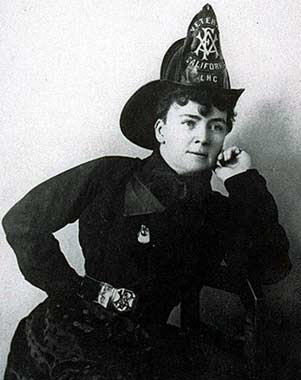
For the rest of her childhood, if her parents ever didn't know where she was, they knew they could go down to the fire department and find her there.
The firefighters absolutely loved her and made her the unofficial mascot of Engine Company Number 5.
She would often be found wearing a (huge!) fireman's jacket and hat.
Later in life, she married Howard Coit, changing her own name to Lillie Hitchcock Coit.
Now, you have to remember that in the mid-1800s, women of that time (and especially upper-class women) were supposed to be "ladies."
They were meant to be dainty, proper, take care of the home, wear pretty dresses, etc.
But Lillie Coit thought that was ridiculous.
For the rest of her life, she was a regular at the firehouse still wearing firefighters' hats and jackets.
She'd be smoking cigars, drinking whiskey, playing poker, and swearing like the dirtiest sailor around.
And (horror of horrors!) you could often find her wearing pants! At that time, it was a woman dressing like a man! Insanity!
But "Firebell Lil" was definitely her own woman, and she played by her own rules.
When Howard Coit died, he left his (large) estate to Lillie. And when she died in 1929, she left a large portion of her estate to the city to beautify the area.
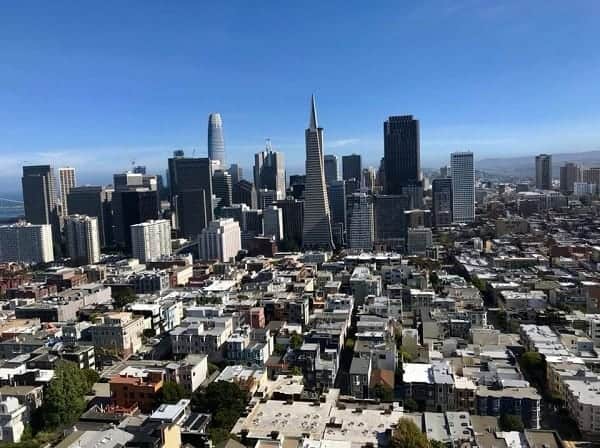
The city used most of the money to build Coit Tower in her honor.
The remainder of the money went to building a sculpture honoring the volunteer firefighters of the city.
While many loved Lillie, those who mingled in San Francisco’s high society regarded Lillie as an oddity and lamented for her poor parents.
She was, in fact, odd for her time. But aside from ruffling a few feathers, she never truly offended anyone.
So take a trip to the tower named after her, and enjoy some spectacular views of San Francisco!
REVIEWS OF COIT TOWER
There are a lot of things to experience at Coit Tower, so it would be a little disingenuous to provide a rough overview of reviews for the landmark itself.
With that in mind, we've decided to provide you with a breakdown of reviews for each individual attraction available at this historic location.
We will be using TripAdvisor to determine ratings and reviews.
Telegraph Hill
An overwhelming majority of guests agree that this area is absolutely beautiful.
Whether driving up or climbing the Filbert Street stairs, several visitors really appreciated the views from this significant landmark.
Some reviewers suggest that the artwork on display at Coit Tower is worth the walk, but others are simply happy to take in the sights and sounds of San Francisco from Telegraph Hill.
Observation Deck
Despite the fact that it is not free to access the top of Coit Tower, most visitors were very pleased with the experience.
Some visitors noted that your time on the observation deck is not limited, allowing you to take in excellent views of the city for as long as you'd like.
Some guests insist that this is one of the best ways to see San Francisco, indicating that the 360-degree view of the area allows you to see several major sites with ease.
Murals
Needless to say, the historic murals on display at Coit Tower are very popular.
Visitors are typically very impressed with the artwork, describing it as both beautiful and incredible.
Several reviewers made note of the fact that it is free to see the paintings on the ground floor, which is an excellent opportunity for anyone in the San Francisco area.
Other guests were just as interested in the architectural structure of this tower, suggesting that the building was oddly constructed but very unique.
The Second Floor Guided Tour
Although there aren't a lot of reviews for this service, those who have left ratings were very impressed.
Most guests agreed that their tour guide was both friendly and well-informed, providing a lot of valuable details about all of the murals on display.
Some visitors indicated that the artwork and history discussed gave them a better appreciation for what life was like in San Francisco during the Great Depression.
Overall Ratings
With an overall rating of 4 stars on TripAdvisor, it's clear that most people who visit Coit Tower are very happy with their experience.
Complaints ranged from the lack of parking to the price of admission.
It's worth noting that it's free to get in on the ground floor, and they have actually lowered fee to access the observation deck.
With that being said, it's almost impossible to please everyone while keeping this historic location well-maintained.
As of posting this, negative reviews only make up roughly 3% of the overall ratings, so it's safe to say that a majority of guests are quite pleased with their trip.
Frequently Asked Questions
When is the best time to visit Coit Tower?
Coit Tower in San Francisco is a popular tourist attraction, and the best time to visit can vary depending on your preferences and priorities.
Coit tower is equally enjoyable throughout the year. As far as the weather is concerned, San Francisco has a mild and often foggy climate which can obscure the views from Coit Tower.
If you prefer clear skies and warmer temperatures, it's generally recommended to visit during the summer months, from June to September.
Similarly, it is beautiful at all times of the day. But some visitors prefer specific times for particular lighting conditions or to witness stunning sunrises or sunsets.
Does Coit Tower have the best views in San Francisco?
Coit Tower is considered to have some of the best views in San Francisco due to its elevated location atop Telegraph Hill.
From the tower's observation deck, visitors can enjoy panoramic views of the city, including iconic landmarks like the Golden Gate Bridge, San Francisco Bay, and the downtown skyline.
The height and positioning of Coit Tower offer a unique and expansive perspective, making it a favored spot for capturing breathtaking views of San Francisco.
Other notable viewpoints like Twin Peaks, Golden Gate Bridge, Alcatraz Island, and Lands End also provide impressive vistas.
What is the history behind the formation of Coit Tower
Coit Tower was constructed in San Francisco in 1933. The tower's creation was made possible through a bequest left by Lillie Hitchcock Coit, a prominent socialite, and patron of the city.
Lillie Coit had a deep admiration for San Francisco's firefighters and wanted to leave a lasting contribution to the city's beautification.
The tower was designed by the firm of Arthur Brown, Jr., architect of San Francisco’s City Hall, and the design of Coit Tower was inspired by the shape of a fire hose nozzle, paying homage to Coit's affinity for firefighters.
During the construction process, a group of artists from the Public Works of Art Project were commissioned to adorn the tower's interior walls with murals.
These murals depict various scenes of daily life in San Francisco during the Great Depression, showcasing the diverse cultural, social, and economic aspects of the city.
Since its completion, Coit Tower has become an iconic symbol of San Francisco and a popular tourist attraction.
It serves as a testament to Lillie Hitchcock Coit's unique legacy and her commitment to enhancing the beauty of the city she loved.
The tower and its murals stand as a cherished part of San Francisco's cultural heritage.
Coit Tower Cafe
The Coit Tower Cafe is located in close proximity to Coit Tower.
Within easy walking distance, this cafe offers a diverse selection of beverages, both hot and cold drinks, along with pastries, paninis, pizza by the slice, and frozen yogurt on its menu.





